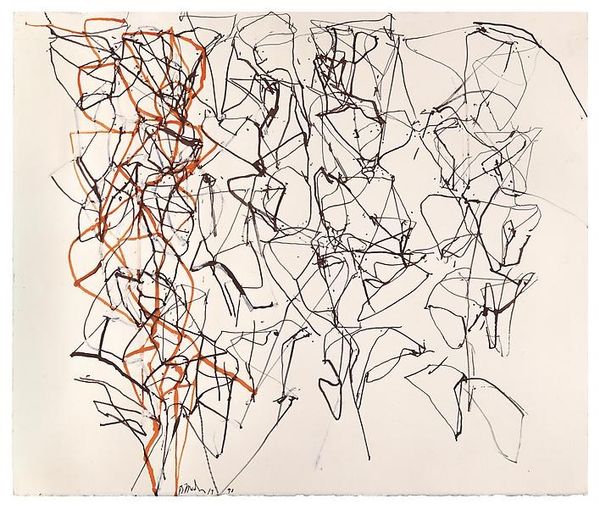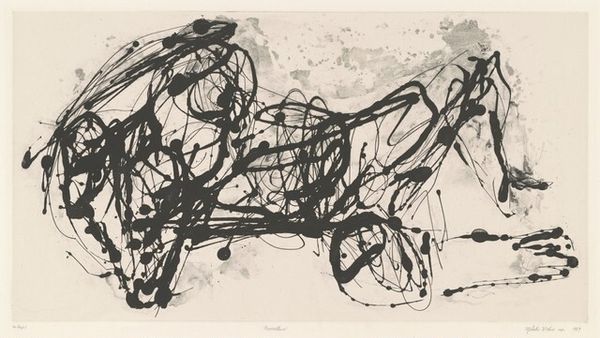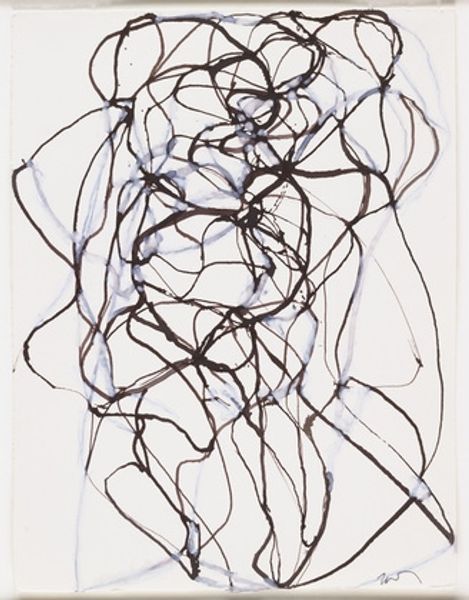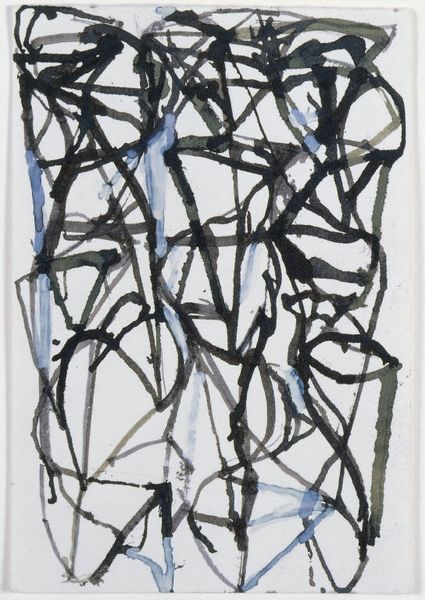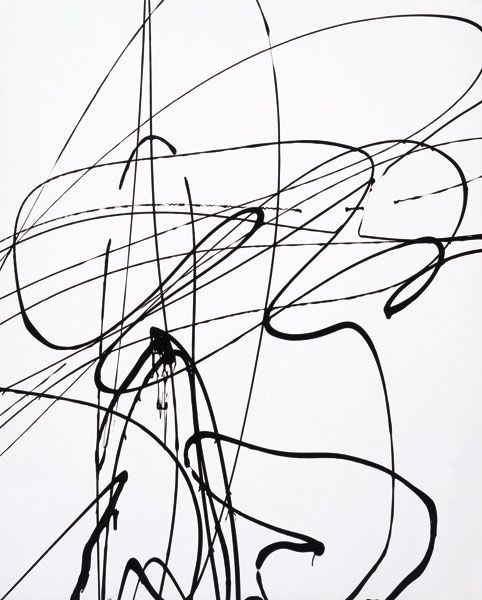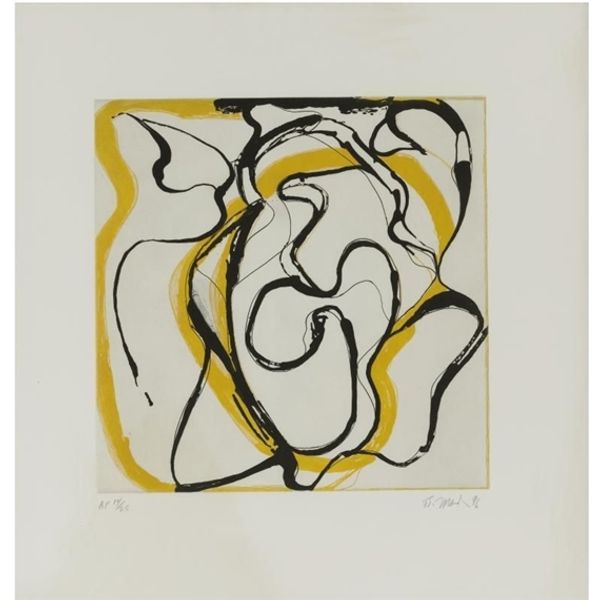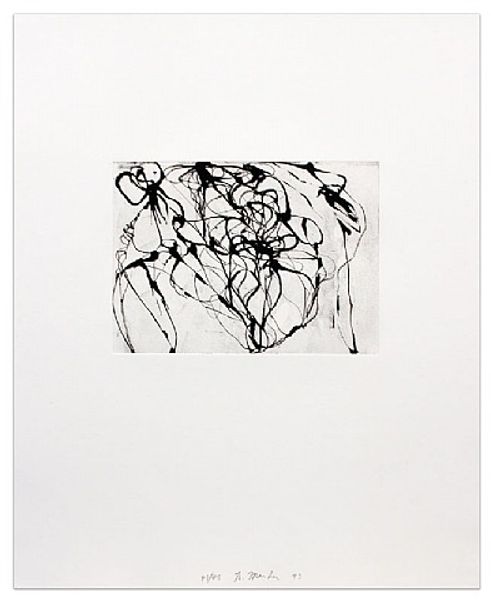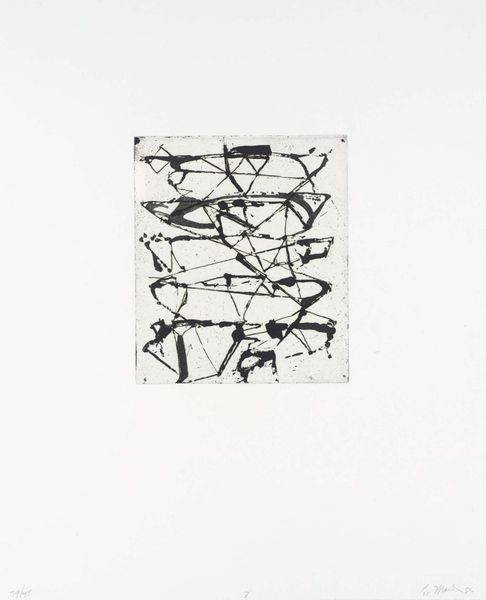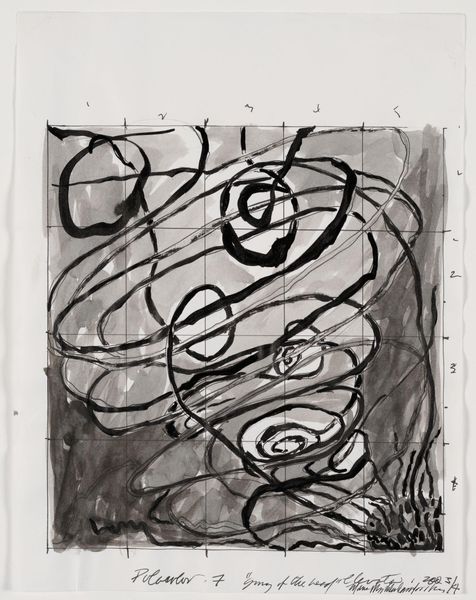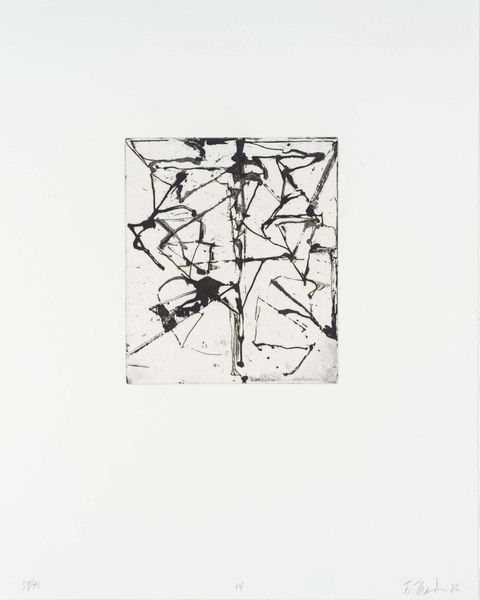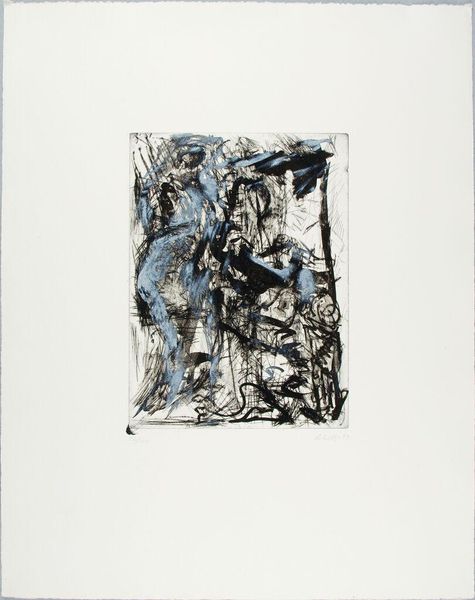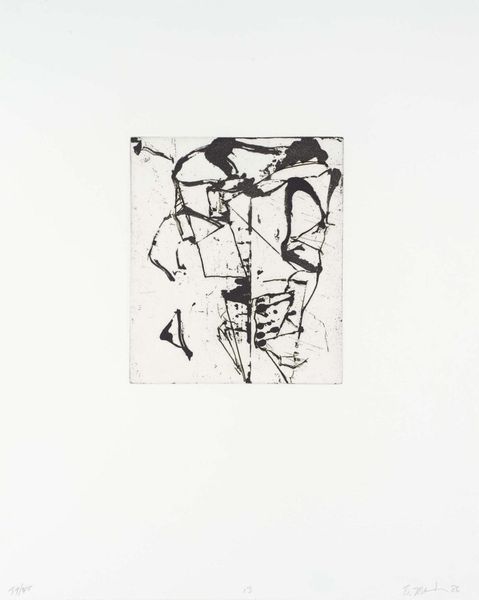
Copyright: Brice Marden,Fair Use
Editor: So, this is Brice Marden's "Han Shan Exit," a linocut print from 1992. The black lines swirling against the white really jump out. It feels both chaotic and contained somehow, a tightly wound spring. What catches your eye when you look at this, or maybe what does it whisper to you? Curator: Whispers... I like that. To me, it’s a conversation, a dance between spontaneity and control. You see those thick, almost visceral lines? Marden's not just *drawing* a line; he's *feeling* it, embodying the energy of calligraphy. It's almost a performance captured in print. Ever felt like life's just a series of scribbles, messy and beautiful all at once? Editor: Absolutely. And the title "Han Shan Exit"—Han Shan was that Cold Mountain poet, right? So does that mean he is trying to portray the poet escaping the mundane and conventional world. Curator: Precisely! Think of those lines as paths, choices, the wanderings of a restless mind seeking, maybe even flailing a little. The "exit" isn’t just physical; it’s a spiritual departure. I find that delicious sense of incompleteness incredibly powerful, the way it lets your mind fill in the gaps, weave its own story. You said chaotic, yes, but look closer, it’s a considered chaos. Does that resonate? Editor: Definitely, especially when you mentioned that 'spiritual departure', I feel it has a sort of seeking spirit. Like I'm now also tracing all the lines, like I'm following his seeking in this printed medium! Curator: Art often does that, doesn't it? Invite you into the artist's experience. Marden's giving us a map, a guide even, but it's a very personal one, leading us to our own Cold Mountain, our own exit. Editor: That's beautifully put. I walked in seeing abstract lines, and I’m walking away contemplating paths, departures, and my own messy scribbles. Thanks!
Comments
No comments
Be the first to comment and join the conversation on the ultimate creative platform.
